When to plant pampas grass – experts share how to grow this ornamental grass with fabulous plumes
Getting the planting timing right is essential for successful pampas grass growth
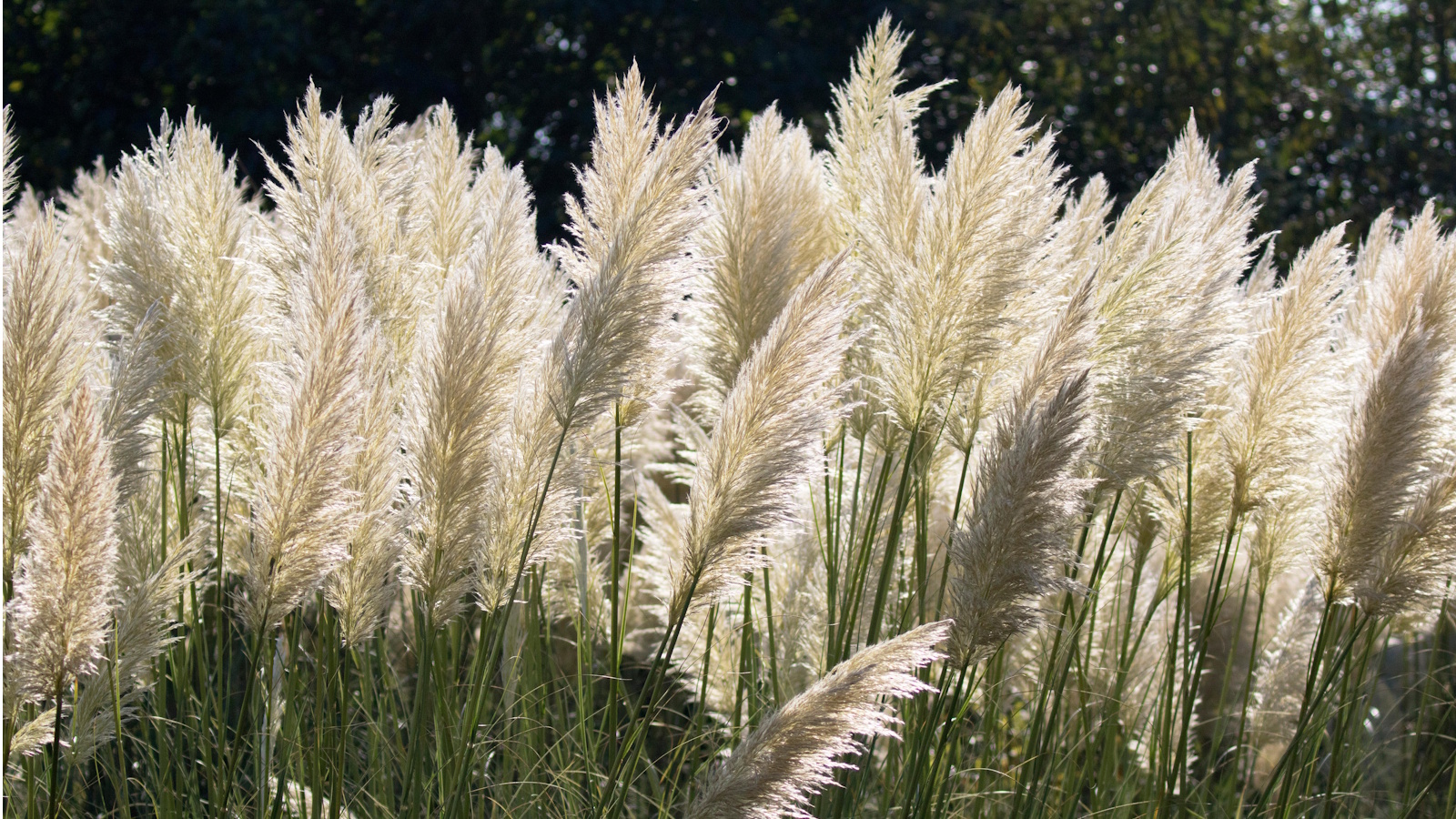

Lucy Searle
Pampas grass is a wonderful ornamental grass with lush panicles that offer a restful break from the green of a typical yard. Knowing when to plant pampas grass can make all the difference between a generous perennial plant and a laclustre weedy grass.
Before learning how to grow pampas grass, you need to know when to plant pampas grass to give your plant the best chance of survival. These ornamental grasses are an iconic addition to both yards and homes, with dried pampas stems becoming a popular interior design trend in recent years. Adding this plant to your backyard ideas is bound to attract attention for all the right reasons while inspiring relaxation with its long, swaying stems.
Here, we look at the best time to plant pampas grass and how to do it, so you can enjoy the tranquil effects of this popular species.
Growing pampas grass: key considerations
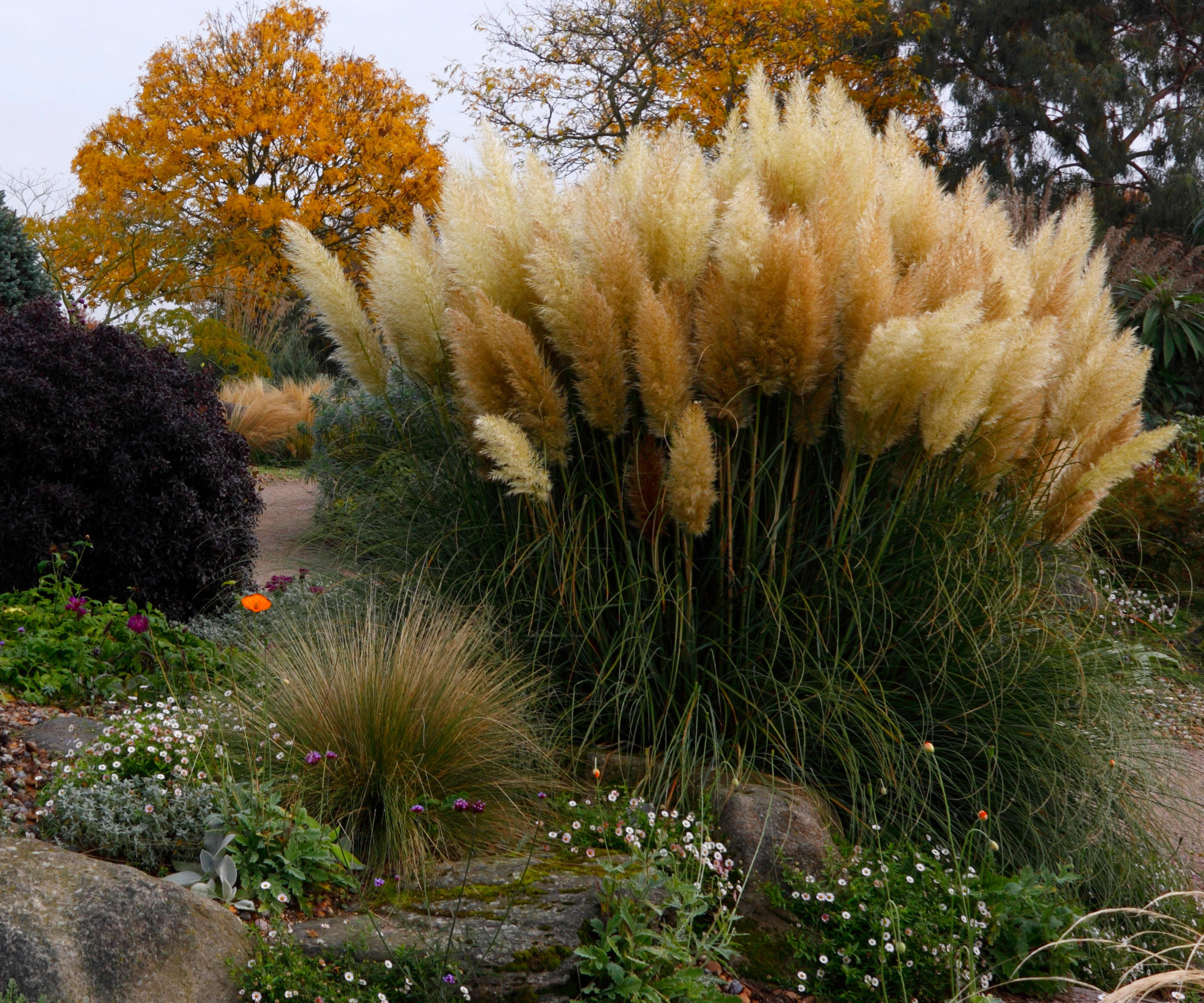
Why grow pampas grass? This drought-tolerant, disease-resistant, fast-growing perennial grass has fabulous, feather-shaped flowers at the end of long stems that make it the perfect focal point.
'Pampas has managed to throw off its suburban image and reinvent itself as the ornamental grass du jour. Its popularity has been building for a while now, and this transformation means these feathery plumes are officially having a moment. It’s easy to jump on the trend and add one to your garden, either snapping up a plant at the garden center or online,' says garden expert Sarah Wilson.
'Alternatively, try growing one from seed (with this pampas grass seed from Amazon) indoors from February to April. They’re easy to grow and in no time you’ll be picking your own to dry.'
A word of warning: pampas grass self-seeds, can grow up to 10ft very quickly, and in some states, it is classified amongst other invasive plants and is banned. Once established, the self-seeding means it is also really difficult to get rid of, so do think carefully, and check local laws before planting it.
Design expertise in your inbox – from inspiring decorating ideas and beautiful celebrity homes to practical gardening advice and shopping round-ups.

Lifestyle journalist Sarah Wilson writes about flowers, plants, garden design and gardening trends for Homes & Gardens. She has studied introductory garden and landscape design and floristry, and also has an RHS Level 2 qualification in the Principles of Plant Growth and Development. She is a regular contributor to Homes & Gardens and Livingetc. She has also written for Real Homes, Modern Gardens and Country Homes & Interiors magazines.
When to plant pampas grass
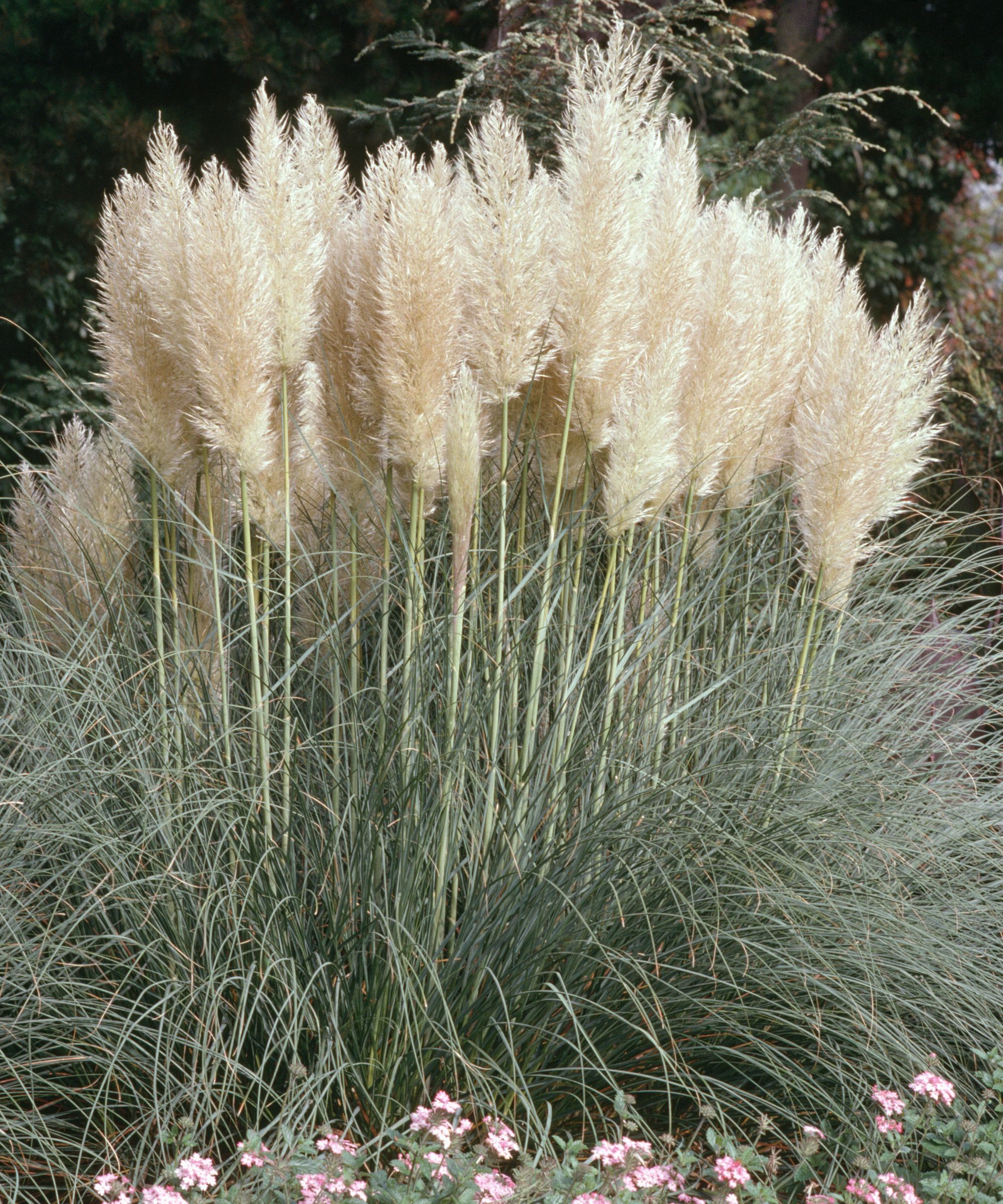
The best time to plant pampas grass (from Nature Hills) is in the spring, along with other perennials to plant in May.
This ornamental plant can take a while to establish its roots despite being a fast grower, as it matures, so planting in spring will give it plenty of time to grow strong to survive winter and build the strength required to remain in your garden for years to come.
This is why you should avoid planting your pampas grass seeds after mid-June, as this might not leave enough time for germination and for roots to fully establish themselves.
Although it is possible to start pampas grass in winter months, you should grow it inside or in a greenhouse.
Planting pampas grass seeds in trays (like these seed trays from Amazon) indoors can help the roots germinate more quickly and grow into robust seedlings.
Transplanting these established plugs in spring into an outdoor garden will help boost their growth.
How to grow pampas grass
Growing pampas grass is fairly easy, whether it's from seed, in a border, or container. Of course, you do need to select the right type of pampas grass for your yard.
The best way to guarantee success is to choose the most common pampas grass (Cortaderia selloana) from a nursery that comes with all the information you need about that particular variety, its growth pattern and preferences.
Avoid Cortaderia jubata, which is infamous for its weedy appearance and ability to spread.
Size: It's worth paying attention to the plant's eventual size – some can grow as tall as 12ft, while dwarf varieties are much more suitable for smaller backyards.
Plume color: While straw-like plumes are the most common, you can find pampas with very pale pink ones, too, which can look beautiful.
Finding the best place to plant pampas grass

Pampas grass likes a sunny spot, though it will grow – not quite as happily – in dappled shade, which means it is most successfully grown in US hardiness zones 7 to zone 11, though there are hardy varieties that can cope with the climate in zone 6 (like this white pampas grass from Amazon that is hardy between zones 5-9).
Pampas prefers well-draining, moist soil and needs plenty of space around it. If you are planting pampas as a hedge or as garden privacy ideas, leave at least six feet between each plant.
Pampas is tolerant of winds – it looks beautiful swaying in a gentle breeze – and tolerates salty conditions, too, making it a good addition to a coastal garden.
'Pampas is also extremely flammable, so it's vital, particularly in dry climates or in areas prone to wildfires, to grow it away from fences, barbecue areas, wooden garden furniture and houses or outbuildings,' advises garden expert Melanie Griffiths.
'Consider your neighbors, too: pampas grass self-seeds, so planting it away from neighbors' backyards means it's less likely to appear uninvited in their borders, too.'

Melanie has worked in homes and gardens media for two decades. Having previously served as Editor on Period Living magazine, and worked on Homes & Gardens, Gardening Etc, Real Homes, and Homebuilding & Renovating, she is now focusing on her passion for gardening as a Senior Editor at Gardening Know How.
Growing pampas grass from seed

You can grow pampas grass from seed, sowing the seed into pots (like these seedling pots from Amazon) indoors from February through to April.
You can use these pampas grass seeds from Amazon, just make sure to read up on seed sowing mistakes to ensure success. You can also collect seeds from your pampas grass to grow elsewhere and propagate.
Once the weather is warmer, transplant the pampas into your border and water well.
Pampas grows fast, so you can expect it to reach full height within months, though pampas grass grown from seed won't flower for at least two years.
Planting out ready-potted pampas grass
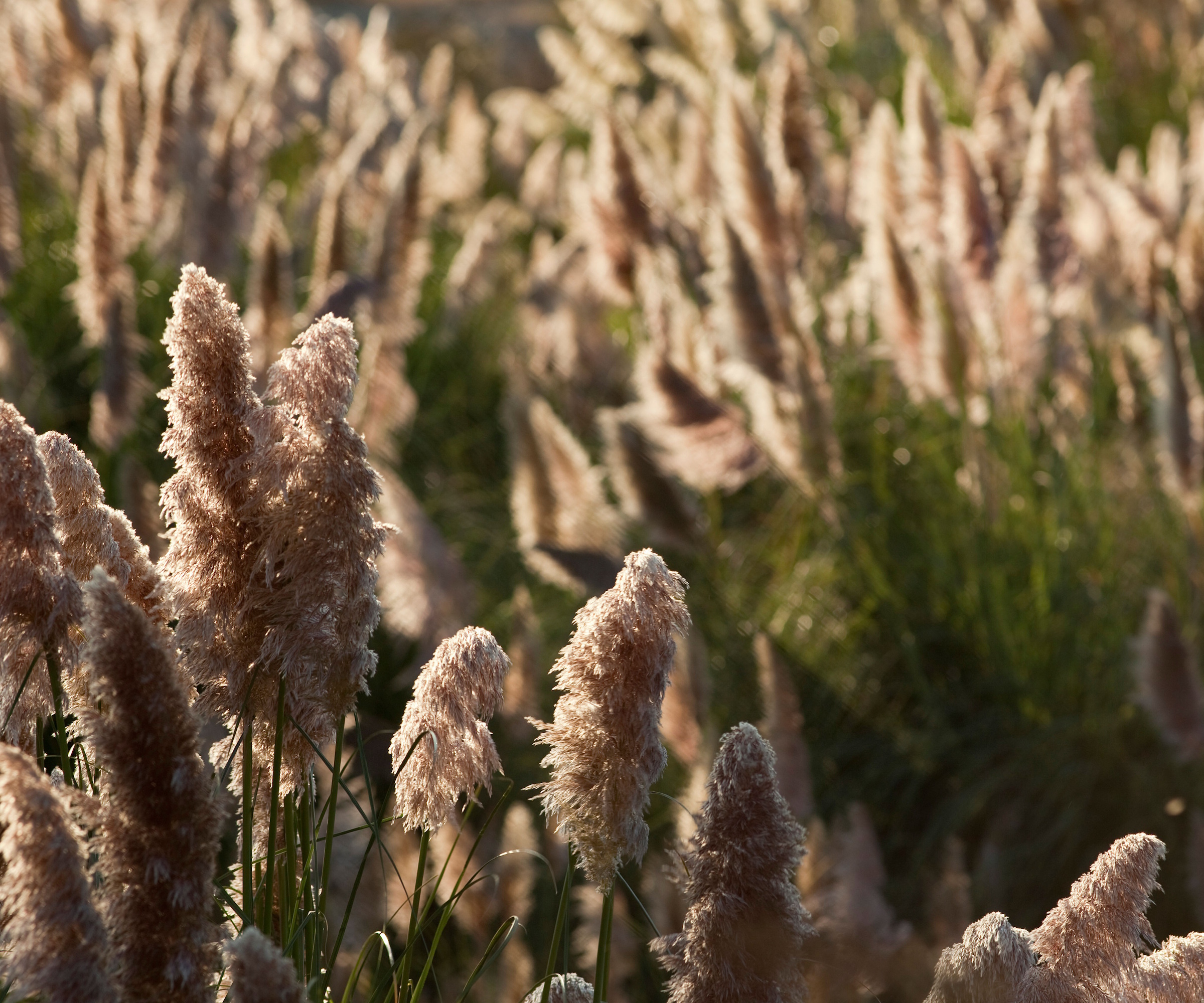
If you have bought a pampas grass ready-potted (from Walmart), you have the advantage of a couple of years' growth – and those signature, feathery flowers.
To plant it out, ensure the hole is the same width and height as the plant's root ball, add fertilizer to the hole, put the pampas in, fill the hole with soil, firm down with your foot, and water really well.
You can dig the hole with essential gardening tools, like this digging shovel from Amazon.
Growing pampas grass in a container

If you are looking for container gardening ideas, pampas grass is a great option, and in fact, it can be advantageous because its growth will, of course, be limited both in terms of spread and height, though it will still happily self-seed.
To grow pampas grass in a container, you will need well-drained soil. This potting mix from Amazon is a good choice, alongside this large outdoor planter from Amazon. It has a drainage hole to aid moisture management.
Caring for and pruning pampas grass
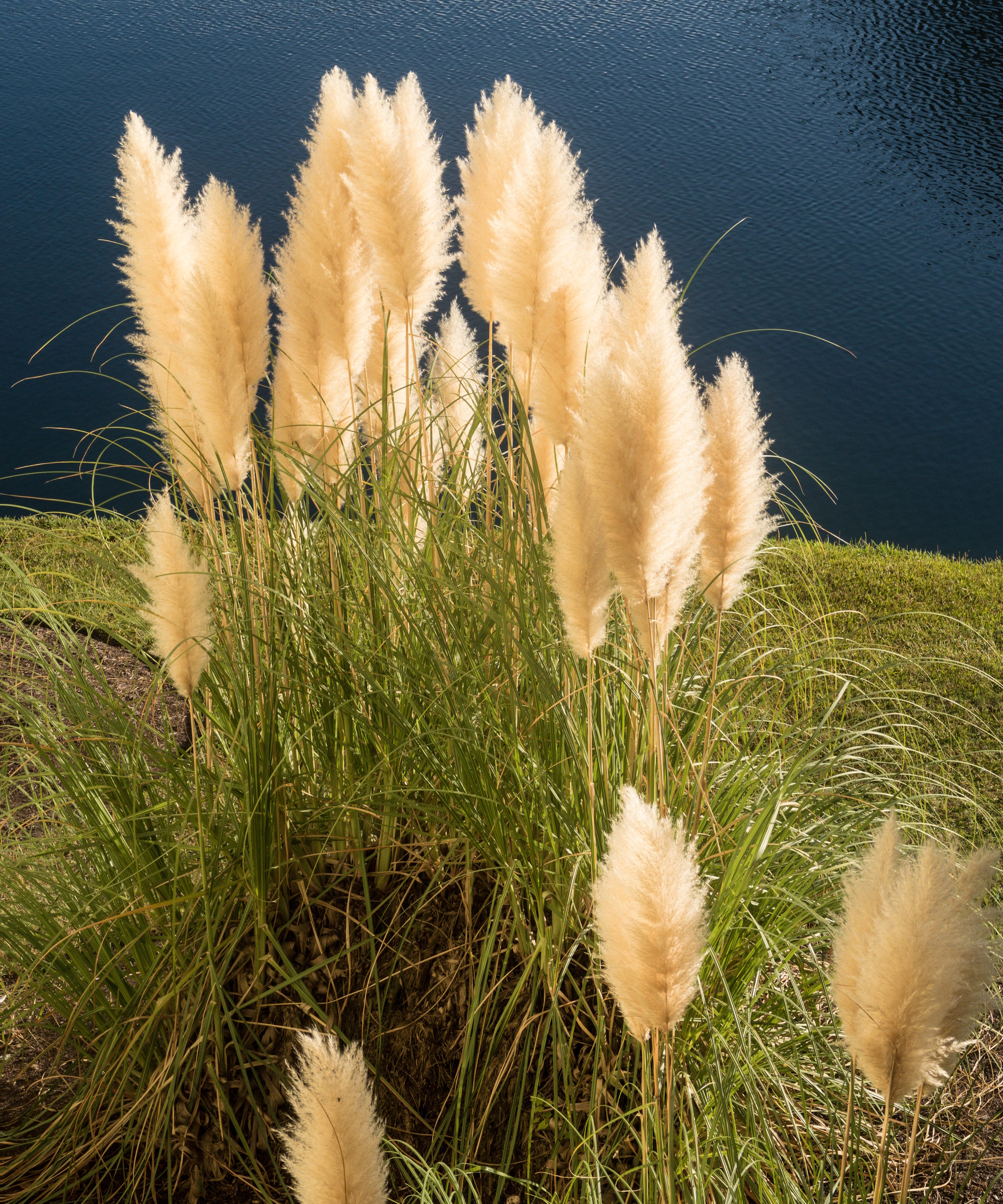
Pampas grass requires little care once established, though if you are going through a period of drought, it should be watered. When the plant is young, watering it once a month will ensure it grows healthily.
That aside, pruning in late winter or early spring – and dividing plants – will be the major maintenance you need to do.
To prune pampas grass, cut it right back near the ground to create a neat, domed shape; this will ensure healthy growth for the new season.
Take the opportunity to also remove dead or damaged leaves using essential pruning tools, like these pruning shears from Amazon.
Once that's done, you can feed the pampas grass with this all-purpose plant fertilizer from Amazon.
FAQs
How do you propagate pampas grass?
If your pampas grass is getting too large, or if you want to re-site some of it, you can divide it in spring. First, prune the pampas to make the job more manageable, then take a shovel to the center of the plant to divide it in situ. Then simply replant, as you did with the original plant.
How long does pampas grass take to grow?
Pampas grass takes approximately 21 days to germinate and will reach its full height within a few months. If your pampas grass was planted as a seed, however, it will not flower for the first two years after planting. Once pampas grass has flowered, the plant spreads quickly, much like its distant cousin, the bamboo plant.
What month does pampas grass flower?
Despite being planted in spring, pampas grass (once mature at two years old) will flower in the late summer months, most likely September. If the weather remains temperate, these blooms can last for months before finally dying back to survive the frosts.
Now that you know when and how to plant pampas grass, you can look into some inspiration on how to landscape with ornamental grasses.
Just remember to always choose varieties that can grow in your US hardiness zone and fit the size and style of your garden.

Tenielle is a Gardens Content Editor at Homes & Gardens. She holds a qualification in MA Magazine Journalism and has over six years of journalistic experience. Before coming to Homes & Gardens, Tenielle was in the editorial department at the Royal Horticultural Society and worked on The Garden magazine. As our in-house houseplant expert, Tenielle writes on a range of solutions to houseplant problems, as well as other 'how to' guides, inspiring garden projects, and the latest gardening news. When she isn't writing, Tenielle can be found propagating her ever-growing collection of indoor plants, helping others overcome common houseplant pests and diseases, volunteering at a local gardening club, and attending gardening workshops, like a composting masterclass.
- Lucy SearleGlobal Editor in Chief
You must confirm your public display name before commenting
Please logout and then login again, you will then be prompted to enter your display name.